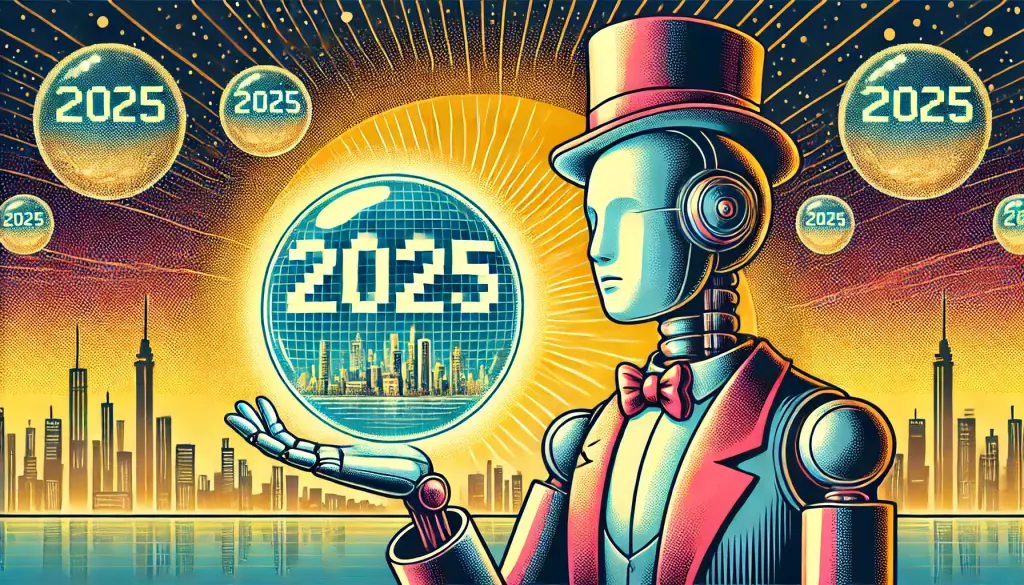The year 2024 marked a pivotal moment in the history of artificial intelligence, particularly in the realm of commercialization and operational applications. The success of large language models (LLMs) was propelled by the debut of ChatGPT in late 2022, and the momentum achieved in 2023 clearly carried over into 2024. The landscape evolved dramatically as an array of new models emerged, not solely from established tech giants like OpenAI, Microsoft, Meta, and Google but also from vibrant startups and independent developers. The anticipated slowdown in AI research turned out to be largely overstated, as advancements in technologies continued to flourish, along with innovative approaches to AI that promised to redefine how we engage with this compelling frontier.
The Emergence of Innovative AI Models
One of the most striking developments in 2024 was the diversification and sophistication of AI models. OpenAI, the frontrunner in initiating the generative AI era, exhibited remarkable resilience against intensifying competition. They introduced the o1 model, which emphasized reasoning capabilities for complex prompts, yielding higher accuracy particularly in nuanced tasks across science and software development. This was followed by the announcement of the o3 model, indicating that OpenAI was committed to advancing its technology while maintaining its competitive edge.
Equally noteworthy was the unveiling of Sora, a video generator model that was highly anticipated throughout the year. Sora’s introduction provided a thrilling glimpse into AI-driven content creation, channeling a spirited competition with existing players in the AI video segment. Alongside this, Meta’s Llama series showcased extraordinary developments, with Llama 3 and its subsequent variations setting benchmarks in open-source AI performance, bolstered by emerging Chinese models that disrupted expectations with surprising efficiency and functionality.
Competition and Collaboration Among Giants
2024 also witnessed significant developments within tech giants and how they collaborated and competed. Google, often criticized for its initial offerings in the AI domain, turned the tide with the Gemini series, later releasing versions that outperformed many competitors in practical applications. Their Gemini 2.0 Flash model offered real-time video analysis capabilities and advanced interactions on digital interfaces, showcasing how adaptability and innovation could revive perceptions of a brand previously seen as faltering.
Moreover, the competition amongst organizations encouraged them to innovate rapidly. Initiatives like Salesforce’s Agentforce 2.0 and SAP’s Joule, which transformed established chatbots into advanced AI agents, hinted at a serious pivot towards productivity-enhancing solutions that directly address enterprise needs. These developments were part of an overarching trend where the concept of “agentic AI” transcended mere buzzwords to become essential components within enterprise software environments.
As 2024 progressed, the implications of AI began to penetrate various facets of daily life and corporate operations. The integration of generative AI capabilities across platforms, from social media to business applications, streamlined and personalized user experiences. Companies like Meta, Microsoft, and even newcomers led by Elon Musk’s xAI launched comprehensive AI image generators and applications that enhanced content engagement and functionality.
The move towards comprehensive AI integration highlighted a broader narrative: the expectation that 2025 would usher in large-scale deployments of LLMs and robotics across both commercial sectors and daily consumer environments. The evolution towards AI-powered automation and consumer robotics could necessitate a transformation in interactions, refining how humans engage with technology on both personal and professional levels.
Looking forward, the trajectory established in 2024 signals an exciting horizon for artificial intelligence. The groundwork laid by the advancements in LLMs, the successful introduction of agentic tools, and the elevation of competitive benchmarks have set the stage for an expansive deployment of AI capabilities. As we anticipate the emergence of truly autonomous systems capable of complex decision-making and effective collaboration with humans, the potential applications for industries are boundless.
The achievements of 2024 illustrated not just technological advancements but a radical shift in how businesses envision AI’s role in everyday life. From enhancing productivity to personalizing experiences, this year has redefined expectations and showcased the relentless drive towards innovation. The next chapter in AI beckons, promising a future that could forever change the landscape of work, creativity, and interaction. As we look forward to 2025, one can only imagine the possibilities that lie ahead in this burgeoning field.


Leave a Reply
You must be logged in to post a comment.